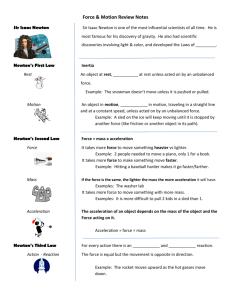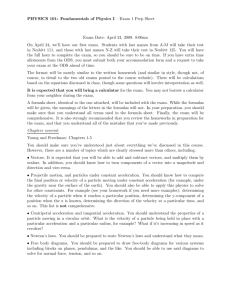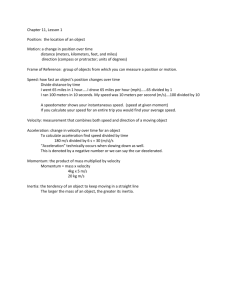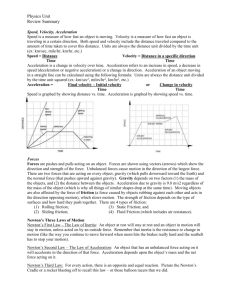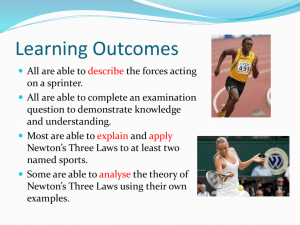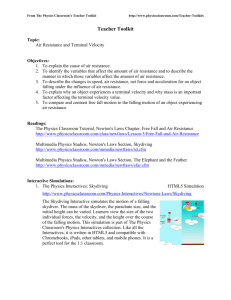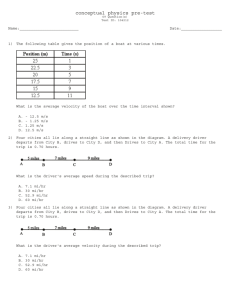Vocabulary: Fan Cart Physics
advertisement
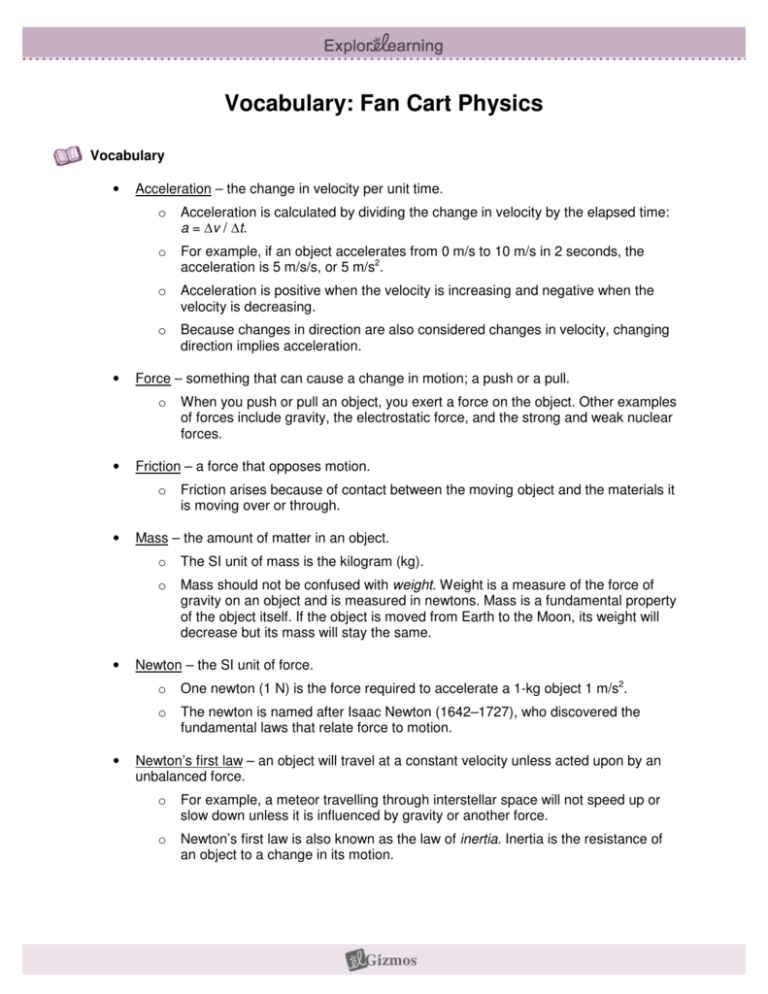
Vocabulary: Fan Cart Physics Vocabulary • • Acceleration – the change in velocity per unit time. o Acceleration is calculated by dividing the change in velocity by the elapsed time: a = ∆v / ∆t. o For example, if an object accelerates from 0 m/s to 10 m/s in 2 seconds, the acceleration is 5 m/s/s, or 5 m/s2. o Acceleration is positive when the velocity is increasing and negative when the velocity is decreasing. o Because changes in direction are also considered changes in velocity, changing direction implies acceleration. Force – something that can cause a change in motion; a push or a pull. o • Friction – a force that opposes motion. o • • • When you push or pull an object, you exert a force on the object. Other examples of forces include gravity, the electrostatic force, and the strong and weak nuclear forces. Friction arises because of contact between the moving object and the materials it is moving over or through. Mass – the amount of matter in an object. o The SI unit of mass is the kilogram (kg). o Mass should not be confused with weight. Weight is a measure of the force of gravity on an object and is measured in newtons. Mass is a fundamental property of the object itself. If the object is moved from Earth to the Moon, its weight will decrease but its mass will stay the same. Newton – the SI unit of force. o One newton (1 N) is the force required to accelerate a 1-kg object 1 m/s2. o The newton is named after Isaac Newton (1642–1727), who discovered the fundamental laws that relate force to motion. Newton’s first law – an object will travel at a constant velocity unless acted upon by an unbalanced force. o For example, a meteor travelling through interstellar space will not speed up or slow down unless it is influenced by gravity or another force. o Newton’s first law is also known as the law of inertia. Inertia is the resistance of an object to a change in its motion. • • • Newton’s second law – the force acting on an object is equal to the product of its mass and acceleration: F = ma. o The greater the force on an object, the greater its acceleration. o If you add mass to an object, it will accelerate less rapidly under a given force. Newton’s third law – a force in one direction results in an equal force in the opposite direction. o To move to the right, a walking person must push the ground to the left. o If a fan pushes air to the left, the fan will be pushed to the right. o A rocket moves upward by accelerating air downward. Velocity – the speed and direction of a moving object. o Motion to the right is considered positive and motion to the left is negative. The velocity of an object moving from left to right is positive. The velocity of an object moving from right to left is negative.


